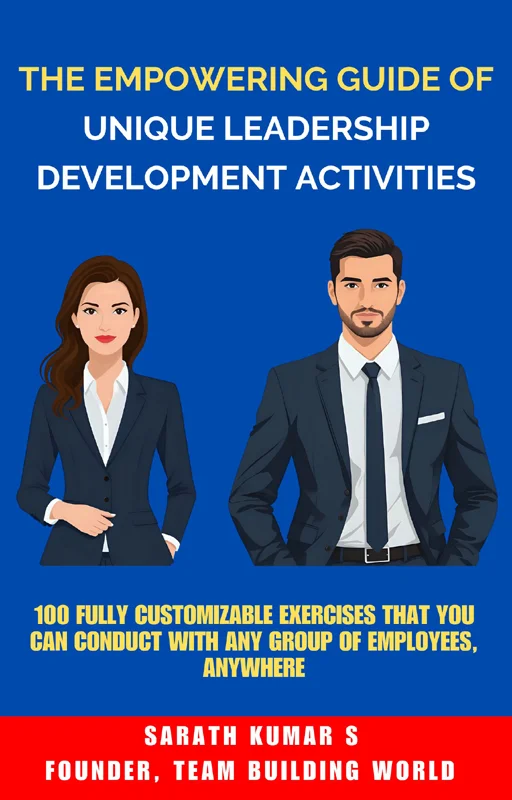How to Design a Leadership Development Program?
Do you want to know how to design an effective leadership development program?
Leadership plays a critical role in the success of any organization. Building strong leaders ensures that teams perform effectively, organizational goals are met, and a positive workplace culture thrives. A well-designed program can help organizations identify, nurture, and support future leaders. But how do you go about creating such a program?
In this article, let’s see how to design a leadership development program that is tailored to the needs of your organization.
Benefits of an Effective Leadership Development Program
A well-implemented program delivers numerous benefits.
Employee Retention: It improves employee retention, as team members feel valued and invested in.
Better Decision Making and Innovation: Leaders equipped with the right skills and mindset are better prepared to address the challenges. So, it enhances decision-making and innovation in the organization.
Strong Organizational Culture: It contributes to creating a strong, cohesive organizational culture.
How to Design a Leadership Development Program?
Now, let’s dive into the steps for designing an effective program for enhancing leadership skills in your organization.
Step 1: Identify Your Organization’s Needs
The first step in designing a program is to identify the specific needs of your organization. This could be done through conducting surveys, focus groups, or interviews with employees and leaders. Some key questions to consider are:
- What skills and competencies do our current leaders possess?
- What skills and competencies do we want our future leaders to have?
- Are there any specific challenges or gaps that need to be addressed in our organization?
Once you have a clear understanding of your organization’s needs, it will guide the design and implementation of your program.
You can also read: 11 Leadership Development Activities for Employees
Step 2: Define Clear Objectives
Once you have identified your organization’s needs, the next step is to establish clear objectives for your program. These objectives should align with your organization’s strategic goals and address the skills gaps you have identified. For example, if fostering innovation is a priority, your program might focus on creative problem-solving and strategic thinking. Clear objectives provide direction and help measure the program’s success over time.
When defining your objectives, make sure they are specific, measurable, achievable, relevant, and time-bound (SMART). For instance, “Improve communication skills in middle management by 20% within six months” is a clear and actionable goal that sets a solid foundation for your program.
You can also read: The 5 Leadership Development Stages in the Modern Day
Step 3: Design the Program Framework
With your objectives in place, the next step is to design the framework of your leadership enhancement program. This includes deciding on the structure, format, and delivery methods that best suit your organization. Depending on your goals and resources, the program could include workshops, one-on-one coaching sessions, mentoring, online courses, or on-the-job training.
It is important to create a balance between theoretical learning and practical application. For instance, after a session on conflict resolution, participants could engage in role-playing exercises to practice handling difficult scenarios. Tailor the content to the needs of your target audience, whether they are emerging leaders, mid-level managers, or senior executives.
You can also read: 10 Leadership Development KPIs to Track Success
Step 4: Select the Right Facilitators
The effectiveness of a program greatly depends on the quality of its facilitators. These could include internal leaders, external trainers, or subject-matter experts who bring both knowledge and experience to the table. Select facilitators who can engage participants, provide actionable insights, and foster an environment of openness and learning.
Consider involving senior leaders within your organization to act as mentors or deliver certain parts of the program. This not only provides participants with real-world insights but also reinforces the organization’s commitment to developing its people. If hiring external trainers, ensure they have a deep understanding of your industry and organizational context to provide impactful guidance.
Step 5: Implement the Program
With the framework and facilitators in place, it’s time to put your program into action. Begin by communicating the program’s goals, structure, and benefits to all participants and stakeholders. Ensure that employees understand how the program aligns with their career growth and the organization’s objectives.
During implementation, create a supportive and engaging learning environment. Encourage the learners to actively participate, ask questions, and share their experiences. Provide resources such as reading materials, tools, and access to online platforms to enhance their learning experience. Keep the sessions interactive to maintain engagement and ensure that participants can immediately apply their learnings to real-world scenarios.
Step 6: Measure and Evaluate Success
No program is complete without measuring its effectiveness. This step is critical to understanding whether the program is achieving its objectives and providing a return on investment. Use both quantitative and qualitative methods to evaluate success.
Measure success through tools such as surveys, assessments, and performance evaluations. For example, you might assess skills development through pre- and post-program evaluations or track improvements in leadership effectiveness using key performance indicators (KPIs). Additionally, gather feedback from participants about their learning experience and how the program has impacted their roles.
Step 7: Foster a Culture of Continuous Leadership Development
Leadership development shouldn’t end with the completion of a program. To sustain growth, foster a long-term culture of learning and development within your organization. Encourage the leaders to continue building their skills by attending advanced training, participating in industry events, and sharing knowledge with their teams.
Consider establishing ongoing mentoring or peer-coaching programs to reinforce the skills learned and provide continued support. Create opportunities for leaders to take on new projects or roles that challenge them and expand their capabilities. By embedding leadership enhancement into your organization’s culture, you ensure a steady pipeline of skilled and motivated leaders.
Step 8: Recognize and Celebrate Progress
To maintain motivation, it is essential to recognize and celebrate progress along the way. Acknowledge participants’ successes, whether it’s through individual or team achievements, and highlight their contributions to the organization. Public recognition during meetings, newsletters, or company-wide events can inspire others to pursue growth opportunities and emphasize the importance of leadership enhancement initiatives.
Establish milestones throughout the program to track progress and provide positive reinforcement. For example, complete key stages with certificates of achievement, verbal recognition, or small celebratory events. Recognizing effort and dedication not only boosts morale but also strengthens participants’ commitment to their leadership journeys.
Want Some Unique Leadership Development Activities?
If you want some unique activities to equip your employees with leadership skills, qualities, and mindset, you can get my new e-book:
Or Want Some Unique Team Building Activities?
If you want some unique activities for your employees (both in-person and virtual), you can get my new e-book:
Final Words
Designing a leadership program requires careful planning and a commitment to nurturing talent. By focusing on the organization’s needs, leveraging diverse learning methods, and fostering continuous improvement, you can cultivate a new generation of skilled, confident leaders. This investment in leadership not only benefits the participants but also strengthens the organization as a whole—ensuring success for years to come.
FAQ: Designing a Leadership Development Program
You might have these questions in mind.
Who should be included in a leadership development program?
It should include individuals with high potential, current leaders, and those transitioning into leadership roles. Diversity in participants ensures a wide range of perspectives and fosters inclusive leadership practices. Selecting participants who align with the organization’s goals helps maximize the program’s impact.
How long should a program last?
The ideal length of a program varies based on objectives but typically ranges from a few weeks to several months. Shorter programs work well for targeted skill-building, while longer ones allow for deeper learning and practical application. The key is to strike a balance between depth, flexibility, and participants’ availability.
How can you measure the ROI of leadership programs?
Measuring the ROI of leadership programs requires clear goals and metrics. Common methods include tracking improvements in employee performance, retention rates, and team productivity. Surveys and feedback from participants can also provide valuable insights into the program’s effectiveness. It’s essential to establish a baseline before the program begins, so you have a point of comparison.
How do you ensure the programs remain relevant?
To keep the programs relevant, align them with your organization’s shifting priorities and evolving industry trends. Regularly review and update the program’s content to address new skills, technologies, and competencies required in the modern workplace. Engage participants in feedback to identify the areas for improvement and introduce innovative learning techniques to maintain engagement. By staying adaptive, you ensure the program continues to meet the needs of both employees and the organization.
How can you ensure the sustainability of leadership development efforts?
To ensure the long-term sustainability of leadership development efforts, it’s crucial to integrate them into the organization’s culture. Continuously evaluate and refine the program based on the feedback and outcomes. Encourage ongoing learning and provide resources for participants to continue their growth. It’s also essential to identify and invest in emerging leaders regularly to maintain a pipeline of future talent. Overall, creating a culture that values and supports leadership enhancement is key to sustaining its impact.

